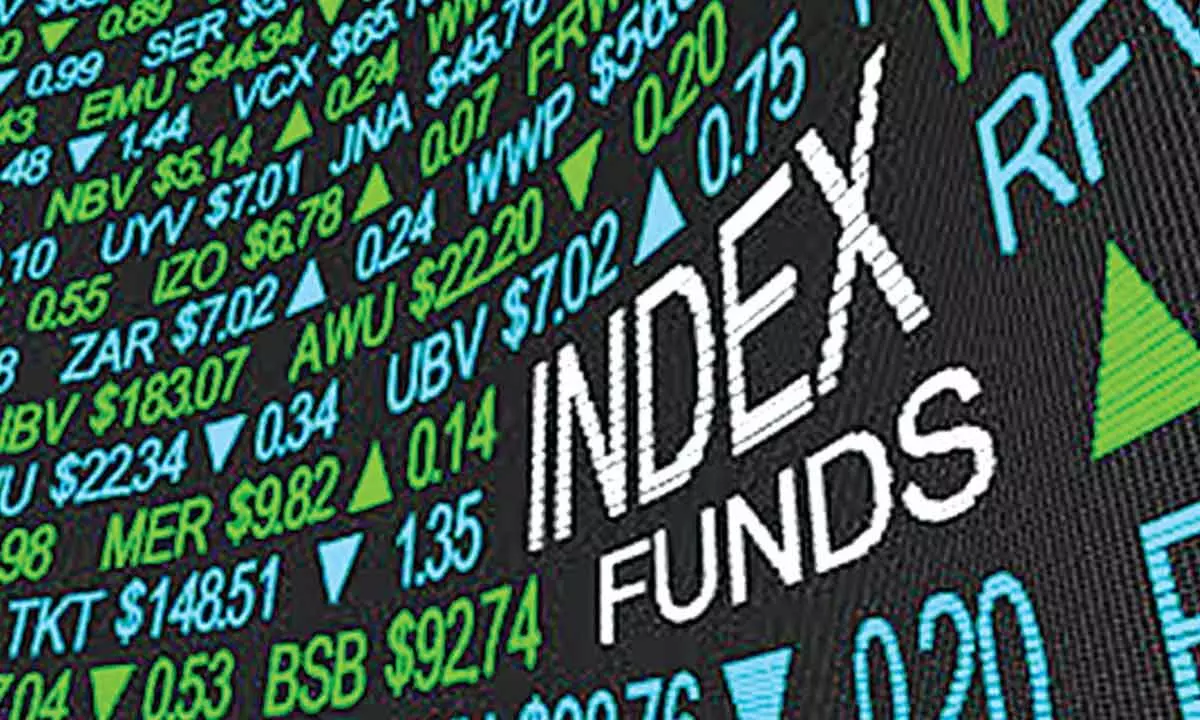Add index funds to your portfolio for better returns at lower cost
While investors predominantly favour active funds for long-term wealth building, AUM of passive funds have been steadily increasing
image for illustrative purpose

There is another set of truly passive funds available in the market without the discretion of the fund manager. These are index funds which mimics or aims to replicate the movement of an index. Index is nothing but a representation or a sign of measure of some collective items mostly homogenous
Mutual funds (MF) are instruments are considered as passive investment vehicles as investors don’t get to dictate on how the fund is invested. This is because, though each fund objective is clearly mentioned, once the investor chooses the fund, he has no further right on how, when or where the fund is allocated. The fund manager has the discretion on how to deploy the fund depending upon the market conditions, his (team) research and his (their) interpretation of how things evolve into the future. The only choice the investor has is to check if the fund objective is aligned to his/her goals, timelines and risk appetite.
The biggest obstacle for the investor is to choose a fund from the plethora of offerings in the market. It’s a complex process of identifying within them those that suit their parameters. The other is the fund management cost i.e., the cost of return, this is the cost that’s inherent in the NAV (net asset value) of the fund. These’re the costs that are incurred by the fund for managing the fund, research and other costs. This entire process could turn complicated.
However, there is another set of truly passive funds available in the market without the discretion of the fund manager. These are index funds which mimics or aims to replicate the movement of an index. Index is nothing but a representation or a sign of measure of some collective items mostly homogenous. For instance, a Sensex or NIFTY 50 which are a indices representing the top-30 and top-50 stocks of Bombay Stock Exchange (BSE) and National Stock Exchange (NSE) respectively. Similarly, one could find many such indices based on various sector like healthcare, Information Technology, PSU (public sector units), etc.
Here, the allocated funds directly get invested into these indices and the sector or stock allocation is already defined in the index. The index, most of the times is cap-weighted i.e., weighted upon the capitalisation and no external intervention is done to manage the fund. This tagging of the investment/fund to the index allows for the fund house to reduce costs (that of research team, fund operation costs, etc.) and so the overall fund management costs are reduced which could bring in more returns to the investor. A major consideration should be given on the liquidity of the index fund, i.e., the ease to invest and divest at short notice as illiquid index funds could hurt the investors.
While allocation to MF and recognition of this avenue as a long-term wealth builder by the investors, it has been predominantly been with the active funds. However, the Assets Under Management (AUM) of the passives has been on the ascent. Though, this is not truly attributed to their popularity among the investors, it’s due to the govt’s push for an increased incremental exposure of the PF (provident fund) money towards the equities. These monies are being funnelled through investments in larger indices thus unknowingly or indirectly many of investors’ (at least of the salaried) money is getting exposed to these funds.
In India, in recent years, the large cap funds have relatively underperformed their benchmarks and so a large-cap index could be a good option for a start. The underperformance is largely due to the combination of market composition i.e., the concentration of a few stocks in terms of capitalisation and the regulations hampering the funds to have allocation beyond a certain level. As most of the indices are cap-based, a higher concentration of few stocks could dictate the index performance and as the fund regulations don’t allow to make higher allocations beyond a threshold could lose out when these stocks outperform.
I’ve mentioned about the expense ratios being lower than the active funds. However, investors should keep an eye on the tracking error of these funds. The tracking error is the deviation of returns generated by the fund with respect to the return of the underlying index. A good index fund has a least deviation from that of the index or has a high mirroring ratio to its index so that the purpose is achieved.
Another aspect to remember is that for those investors to gain higher returns than the benchmark, index funds won’t help as they themselves are the benchmark. Bogle, the founder of Vanguard, which launched this revolution of index investing has a word of caution on overdoing of these funds by the investors. He contended that if the historical trends continue, a handful of giant institutional investors will one day hold voting control of virtually every large corporation. One outcome is that large passive investors mayn’t be as invested in the performance of a single company as asset managers who’ve more riding on the performance of one company. In that scenario, they may not exert as much oversight and pressure as an active investor.
A better way is to make allocations for a mix of passive and active investment avenues. A healthy blend involves exposing to the index funds where a sector is still evolving and has limited stock opportunities and/or those where the segment of active funds are underperforming the benchmark.
(The author is a co-founder of ‘Wealocity’, a wealth management firm, and could be reached at [email protected])

